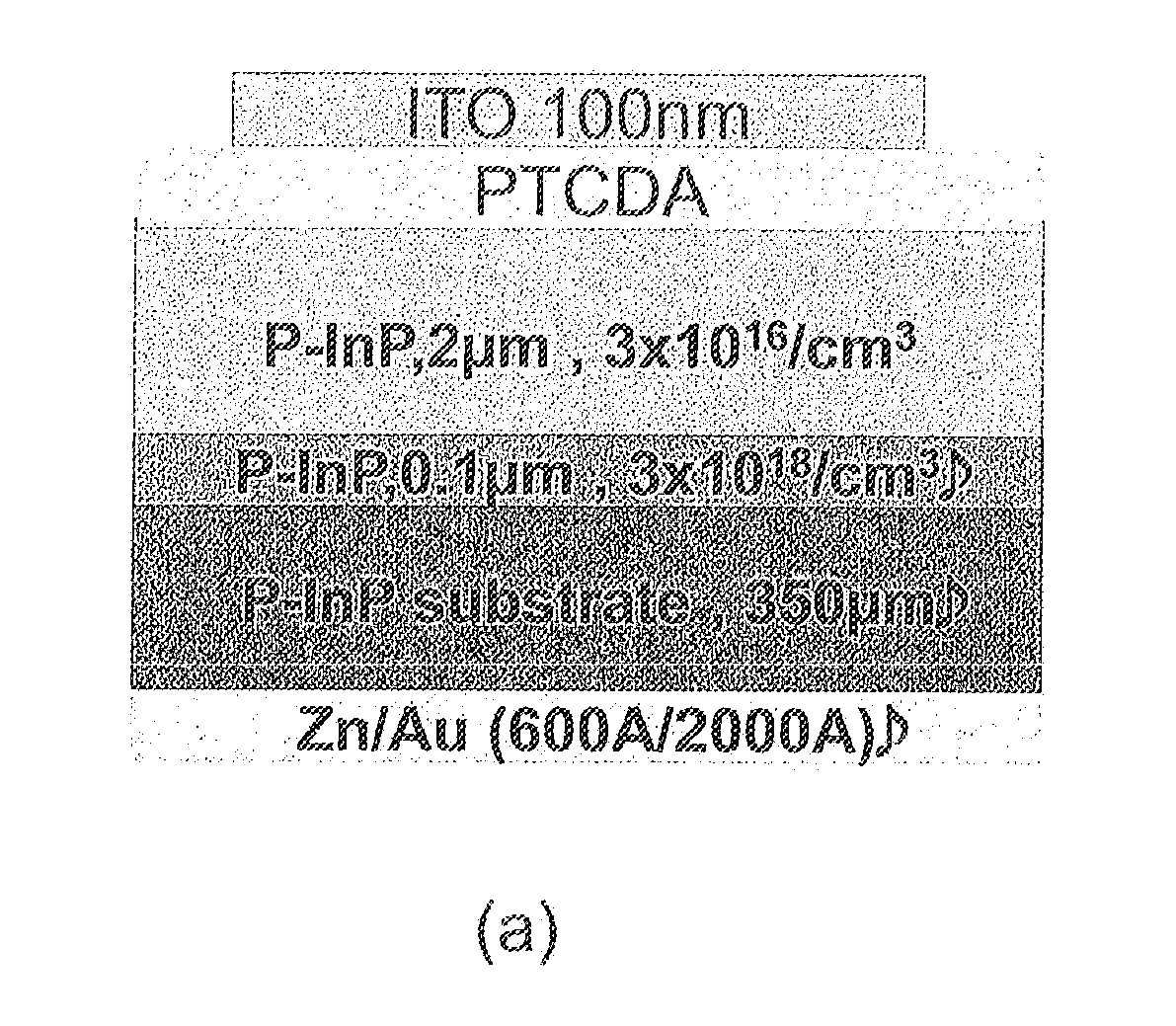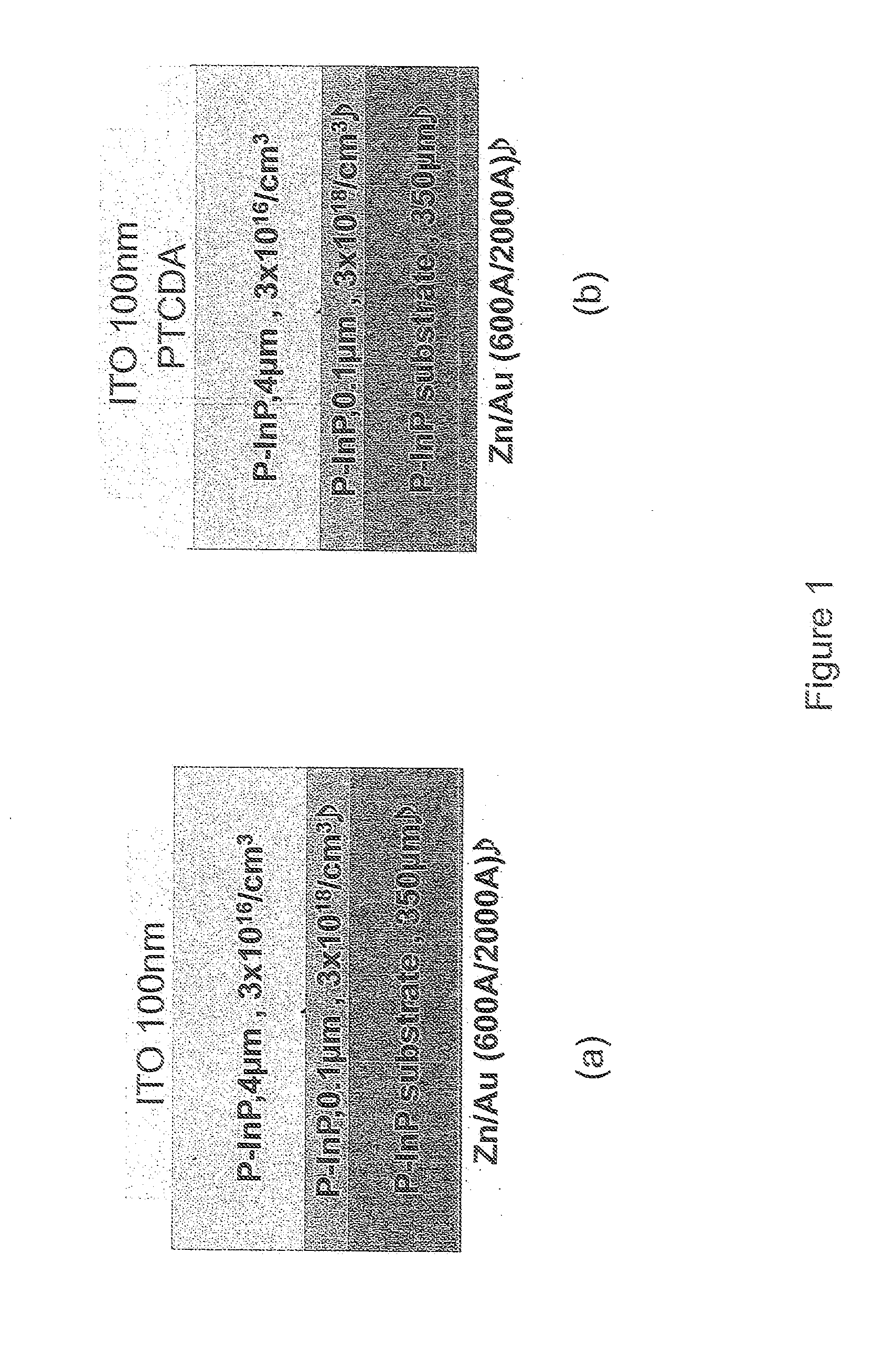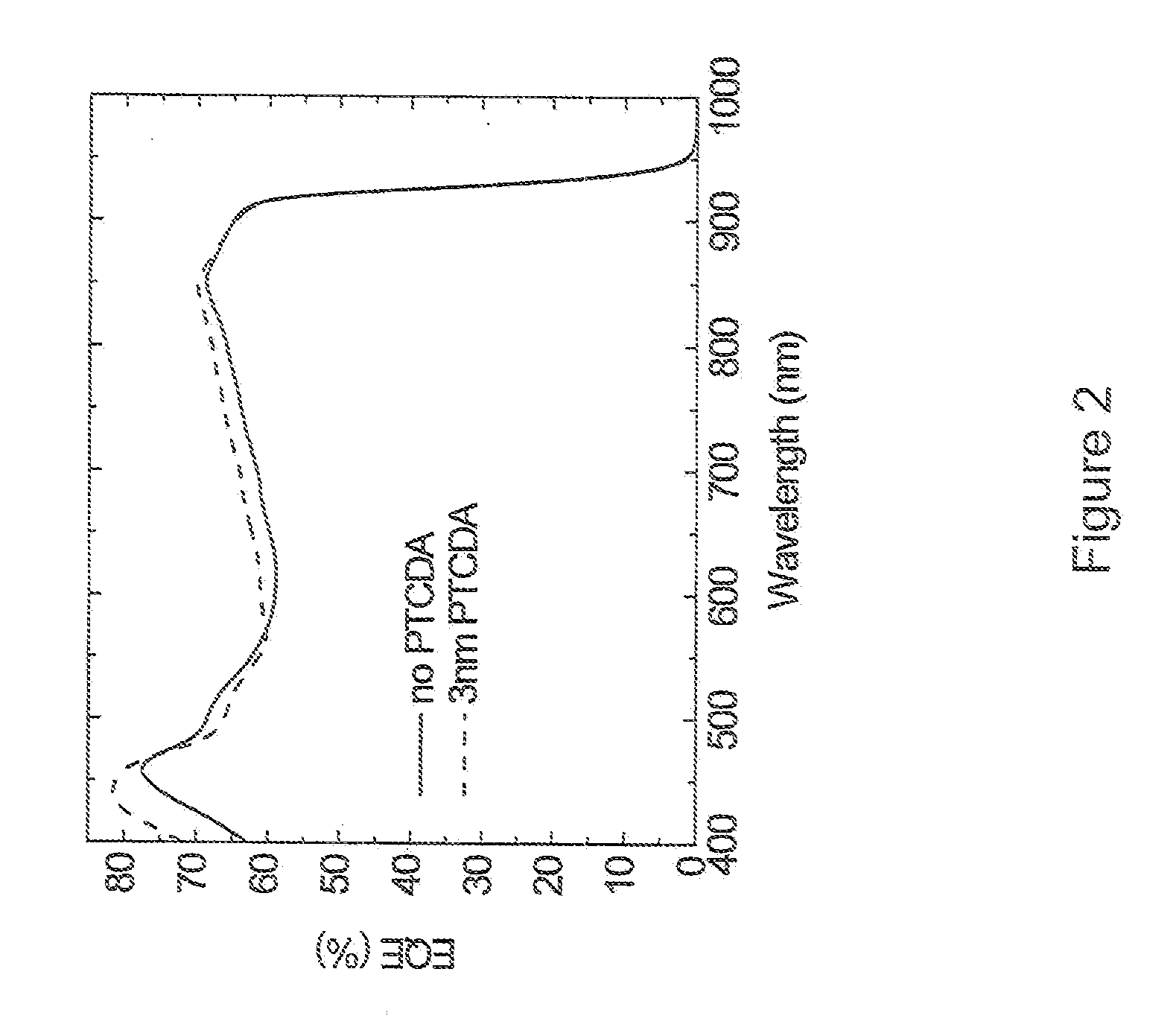Organic semiconductors as window layers for inorganic solar cells
a solar cell and organic semiconductor technology, applied in the field of organic semiconductors, can solve the problems of difficult and expensive production of efficient crystalline-based devices, low voc, and inability to provide signal or current to control detection circuitry, etc., and achieve the effect of increasing power conversion and increasing vo
- Summary
- Abstract
- Description
- Claims
- Application Information
AI Technical Summary
Benefits of technology
Problems solved by technology
Method used
Image
Examples
example
[0082]The epitaxial solar cell structure was grown by gas source molecular beam epitaxy on a p-type, Zn-doped (100) InP substrate. The epitaxial structure consisted of a 0.1 μm thick, Be doped (3×1018 cm−3) p-type InP buffer layer and a 4 μm thick lightly Be doped (3×1016 cm−3) p-type InP absorption layer.
[0083]The epitaxial wafer was then fabricated into Schottky barrier solar cells both without PTCDA window layer and with PTCDA window layer. Right before the device processing, the surface of the InP epi-wafer was treated with one minute of NR4OH dip to remove the native oxide.
[0084]To make the conventional InP Schottky barrier solar cells, indium-tin-oxide (ITO) electrode was directly sputtered on top of the surface-treated InP epi-wafer to form the structure shown in FIG. 1(a). To make the devices with PTCDA window layer, a thin layer of PTCDA was deposited first using vacuum thermal evaporation on the surface-treated InP epi-wafer. ITO electrode was then sputtered on top of the ...
PUM
 Login to View More
Login to View More Abstract
Description
Claims
Application Information
 Login to View More
Login to View More - R&D
- Intellectual Property
- Life Sciences
- Materials
- Tech Scout
- Unparalleled Data Quality
- Higher Quality Content
- 60% Fewer Hallucinations
Browse by: Latest US Patents, China's latest patents, Technical Efficacy Thesaurus, Application Domain, Technology Topic, Popular Technical Reports.
© 2025 PatSnap. All rights reserved.Legal|Privacy policy|Modern Slavery Act Transparency Statement|Sitemap|About US| Contact US: help@patsnap.com



